|
|
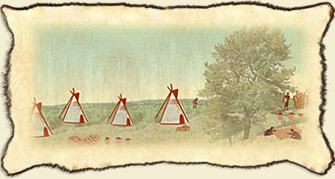
How we lived with the Land
Picking Saskatoon Berries
With the lengthening days, more and more plants began to ripen. We were always on the lookout for Saskatoon berries growing in coulees. Some places in our territory were known as good berry grounds. But the weather could change quickly. We were flexible in our movements so that we could adapt to changing conditions and go to where there were a lot of berries. |
|
|
 |
Camp Sites
Our people moved frequently throughout the year. They did not wander aimlessly. They knew where the berries and other plants grew and where animals were likely to be found. Clans kept in touch with each other all of the time and shared information about the environment. All of our moves were well planned.
Our clans camped along streams and near springs where water and wood was available and where it was safe.

|
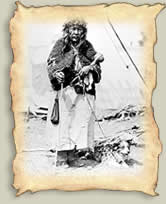 |
Glenbow Archives NA-1093-2
|
| |
|
 |
|
 |
Picking Saskatoon Berries
Women and men picked saskatoon berries while men kept constant vigil against foreign intruders. The berries were spread on the ground and dried.
Saskatoon berries are very rich in vitamins. Our people knew this and the berries were an important part of our diet. Saskatoon berries were dried, crushed, and mixed with dried meat and fat to make
mookimaani (pemmican). This food helped us survive when we could not find fresh meat. The berries were also made into soup. We always made an offering to the plants and thanked their spirit for allowing us to pick them.

|
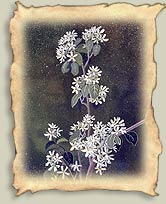 |
Annora Brown,
Saskatoon (Amelanchier alnifolia) (detail), 1959,
Collection of Glenbow Museum
|
| |
|
 |
|
 |
Storing Dried Berries
Dried berries were packed into storage containers made from fetal deer or buffalo bladders.

|
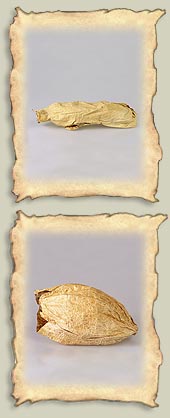 |
Collection of Glenbow Museum
|
 |
|
 |
Tanning Hides
Women dried meat, tanned hides, and sewed. There were always hides in various stages of being tanned and garments being made.
Women were always working with hides. They often worked together, making it a social occasion. This was also a time when girls were taught the skills they would need throughout their lives.

|
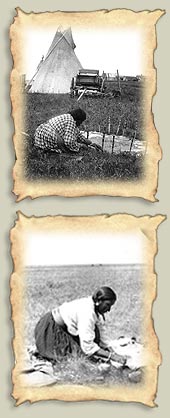 |
Glenbow Archives NA-5425-137
Glenbow Archives NA-2313-16 |
 |
|
 |
Staking Hides for Tanning
Buffalo hides were staked on the ground using pegs made from black birch.

|
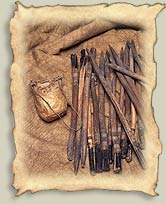 |
Courtesy of Glenbow Museum
|
 |
|
 |
"The leaders of our sacred societies have selected the place for our akoka’tssini where our clans all camp together."

|
"Tomorrow we will start moving towards the akoka’tssini."
 |
 |
|
|

